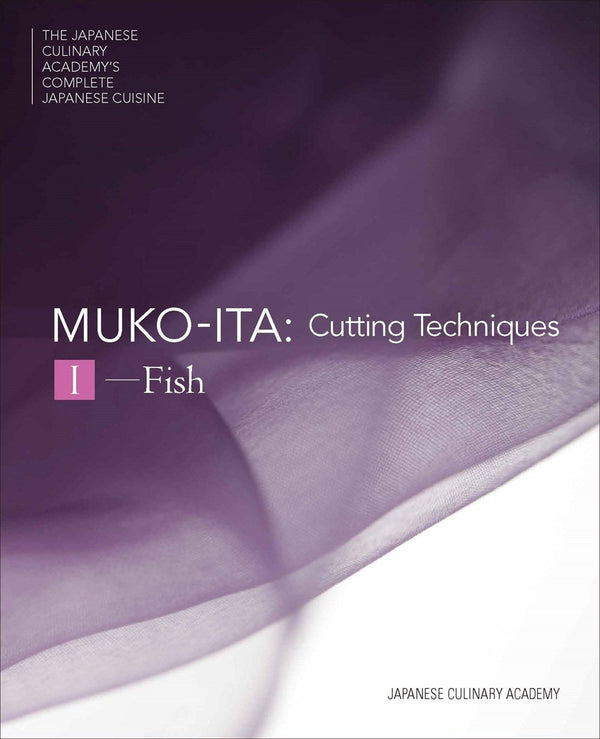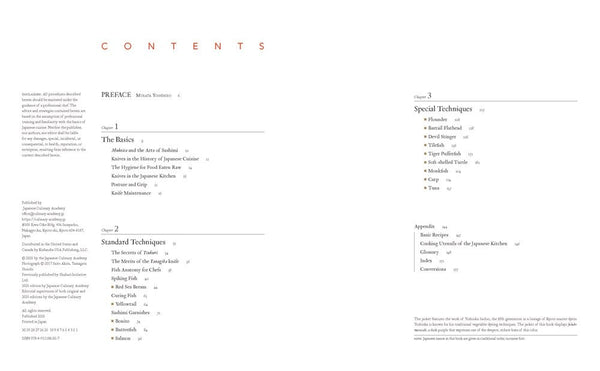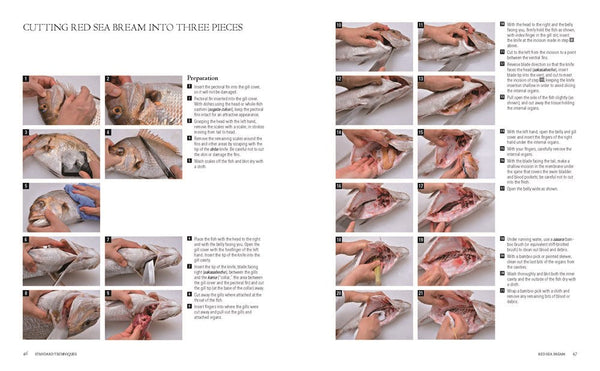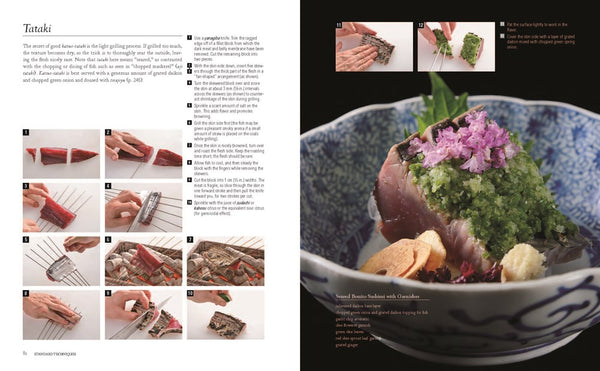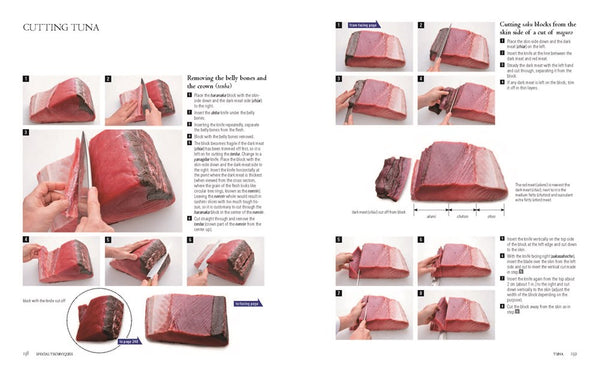Mukoita I, Cutting Techniques: Fish
Shipping calculated at checkout
Few cuisines place as much importance on fish—or on the knife skills required to prepare it—as Japanese cuisine. That focus is fully evident in Mukoita I, Cutting Techniques: Fish, part of the Japanese Culinary Academy Series. This volume is entirely devoted to the detailed breakdown of fish, treating it not as a routine task but as a foundational element of culinary training.
The precision of the instruction is remarkable. Step-by-step photo sequences demonstrate not just how to portion fish, but how to stand, how to grip the knife, and how to adjust technique based on species and anatomy. Six full pages are dedicated to cutting a whole salmon into three pieces, and similar care is given to the likes of yellowtail, bonito, flounder, and devil stinger (okoze). Even the notoriously dangerous fugu is included, with notes on the specialized handling it requires.
Rather than offering generalized guidance, the book aims for depth. Readers are introduced to the principles behind Japanese cutting techniques, including their historical development and their essential role in preparing sashimi. There is also information on hygiene practices, raw fish regulations in Japan, and knife maintenance.
Tools are treated as part of technique, with sections on knife types, sharpening methods, and other essential kitchen implements. The book closes with a set of basic recipes and a glossary, rounding out its function as both a reference and a manual.
This is a rare resource—visually rich, technically exacting, and shaped by the standards of professional training. For cooks who want to understand the logic and discipline behind Japanese fish preparation, there’s little else like it.
Hardcover. Color photographs throughout.
Also in this series:
Introduction to Japanese Cuisine: Nature, History and Culture
Flavoring and Seasoning: Dashi, Umami, and Fermented Foods
Mukoita II, Cutting Techniques: Seafood, Poultry & Vegetables
Yakiba Grilling Techniques: Shio-yaki, Furishio-yaki, Yuan-yaki, Tare-yaki, and Yakitori
Published on September 30, 2025

